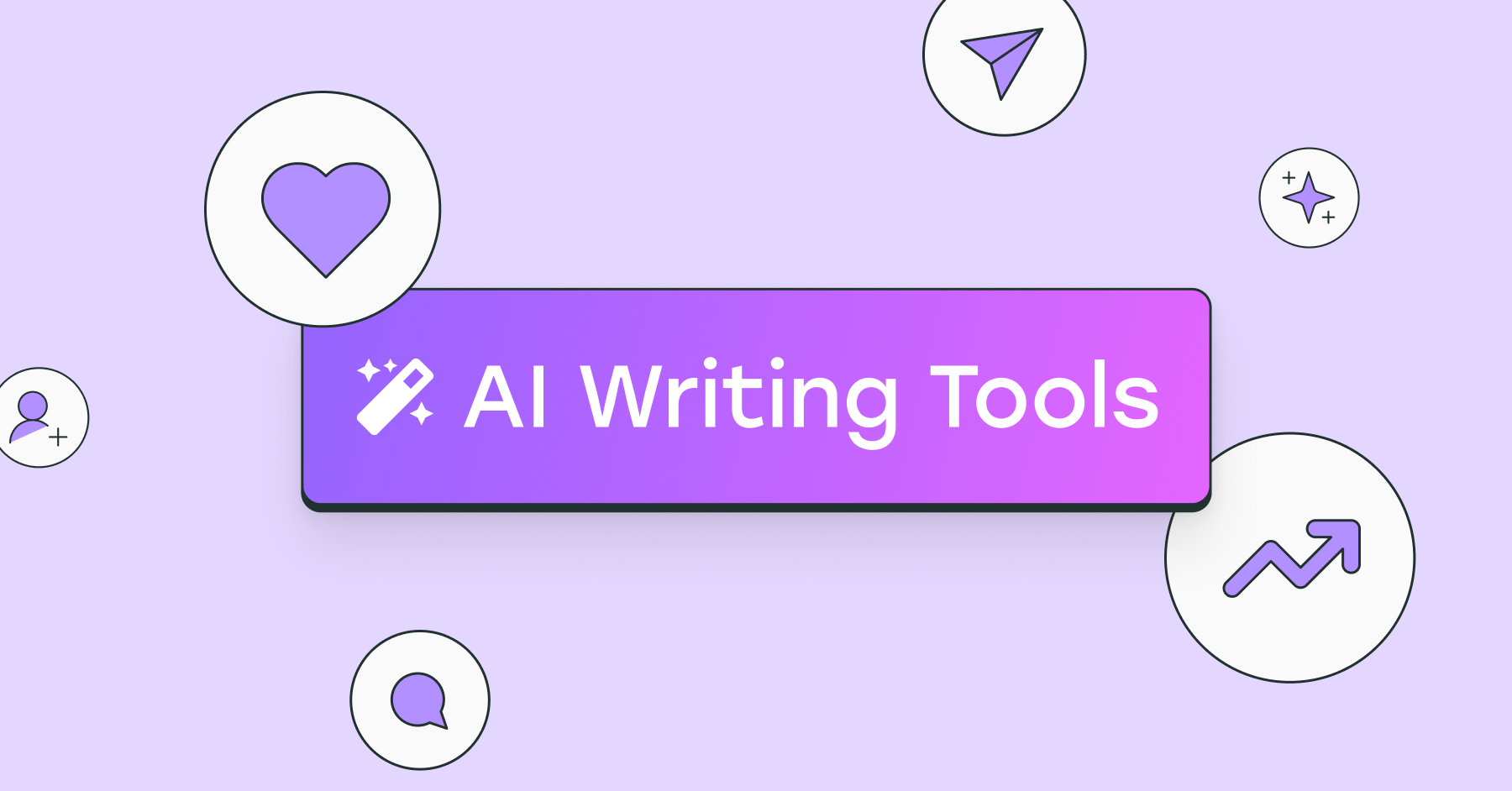
Ask Buffer: How Many Social Media Platforms Should a Small Business Be Active On?
From platform demographics to features, plus a deep dive into important factors to consider, here's what you need to know to find the social media sweet spot for your business.

Senior Content Writer @ Buffer
Question: How many social media platforms should a local business be using? Realistically, it is a challenge to manage multiple platforms well with the limited resources of a small business. – Keegan Edwards
There’s no end to the tasks small business owners have to juggle daily. When you’re managing everything from strategy to sales, adding a dozen social media accounts into the mix is just not sustainable.
Good news: it’s not necessary, either.
While social media is a powerful marketing tool, plenty of entrepreneurs have proved that quality over quantity is key when it comes to using social media to maximize their reach – and sales.
So: how many social media platforms should you be using? Keegan asked this great question as part of our #AskBuffer series. He went on to share his own stance on the topic: “I’ve always recommended picking two that make sense for your type of local business. Two is feasible to keep up with and do well.”
We agree that making a selection you can keep up with is key – but there’s a whole lot of nuance when it comes to exactly how many platforms to spend your time and resources on and (perhaps more importantly) which ones you choose.
In this article, we’ll dig into the factors that you should consider when making this important marketing strategy decision and help you find your social media sweet spot.
How many social media platforms should small businesses be using?
Ultimately, there is no right or wrong answer that applies to all small businesses.
To answer how many platforms you need to cultivate a social media presence on, your first port of call should be figuring out which ones you need to prioritize.
To dig into that, first ask yourself: where is your target audience?
Think about it this way: even if you have the resources to commit to, say, five platforms, are those resources well spent if your target customers aren’t hanging out on three of them?
From there, you need to consider your own business goals, the resources you have at your disposal, and what you have time for to make the best decision.
The only real mistake you can make here is to spread yourself too thin. We recommend starting smaller, and perhaps adding another channel or two into the mix if you find the effort manageable (and worth it!).
Let's explore each social media platform to give you a better idea of where your audience hangs out, plus share a variety of factors to consider when it comes to your business and how many profiles will work best for you.
Which social media platforms should you be using?
As a small business owner, you likely already have a good idea of who your ideal customers are. (If you don’t, fear not; we have guides to defining your target market and creating marketing personas).
Once you know who they are, you can begin to uncover where those customers are. To help you answer that question, here’s a birds-eye view of some of the most popular social platforms, who frequents them, and what they’re used for.
About Facebook’s users*
- Monthly active users: 2.989 billion
- Breakdown by gender: 77percent women, 61percent men
- Dominant age group: 77percent of 30 - 49-year-olds
- Nearly one-third of global online shoppers use Facebook as their preferred social platform for purchasing.
Facebook’s features for businesses
- Meta has grouped Facebook and Instagram’s business tools together in Meta’s Business Suite.
- Facebook also offers Commerce Manager, a shopping catalog, and an inbox to chat directly with customers, meaning that business owners can literally set up shop on the Meta-owned platforms, as well as cross-post between them.
What performs well on Facebook
Creating quality content to share on your Facebook page is the best way to drive potential customers to your social storefront or website. To put your best foot forward with the Facebook algorithm, make sure you’re sharing:
- Meaningful, informative stories
- Accurate, authentic content
- Safe, respectful behavior
Baby carrier brand Ubuntu Baba taps into authenticity on Facebook by interspersing model shots of their products with content creators by their users and even heartfelt posts from their founder, Shannon McLaughlin.
Facebook supports a host of content formats, so you’ll have everything from video to photo- to text-based posts to play with. Video content still sees the highest engagement (and thus reach), but as we unpack in our Facebook Guide for Small Businesses, every format can be valuable on this versatile platform.
About Instagram’s users*
- Monthly active users: 2 billion
- Breakdown by gender: 44 percent women, 36 percent men
- Dominant age group: 71 percent of 18 to 29-year-olds
- 83 percent of Instagrammers use the platform to discover new products and services
- 54 percent of users report having made a purchase after seeing the product on Instagram
Instagram’s features for businesses
- Unique to Instagram is Instagram Shopping, which makes your products directly shoppable within your feed. Instagram Ads are also popular as a pay-to-play option that allows you to target a specific group of users with your relevant content, even if they’re not following you.
- If you regularly work with creators or want to start, Instagram’s Branded Content tools make it easy to partner up.
- Instagram recently launched a new feature worth exploring for your business: Broadcast Channels. These channels allow brands or creators to send mass messages directly to followers who have opted in to receive them – great for preventing big announcements from being swallowed by the Instagram algorithm.
What performs well on Instagram
As a highly visual platform, it’s generally beautiful, aspirational content that resonates on Instagram. According to an analysis by influencer marketing platform Heepsy based on number of profiles and engagement rates, the top 10 categories are media, fashion, music, arts, fitness and wellness, photography, food, travel, cinema and acting, and make-up.
Formats supported on the platform include images and short-form videos via posts or Reels on the feed or within Instagram Stories that disappear after 24 hours. Birch & Bramble makes the most of all three by showcasing their work in photo posts and behind-the-scenes Reels and stories.
TikTok
About TikTok’s users*
- Monthly active users: 1 billion
- Breakdown by gender: 24 percent women, 17 percent men
- Dominant age group: 48 percent of 18 - 29-year-olds
- Just under half (49 percent) of users have said they have bought a product after seeing it on TikTok.
TikTok’s features for businesses
- Creator Marketplace will help you partner with the right TikTok stars for your brand
- Business Creative Center is a must-visit for inspiration and guidance.
- TikTok Shop (only available in select markets) allows you to create a storefront to sell products right in your videos and on your profile page's product showcase tab. We unpack all this and more in our Beginner’s Guide to TikTok for Business.
What performs well on TikTok
A hashtag analysis revealed entertainment, dance, and pranks take the top-three spots on the short-form video platform, but fitness/sports, home renovations/DIY, beauty/skincare, fashion, lifehacks/advice, and pets are also contenders.
Fashivly CEO Ashlyn Greer (who recently starred in our Creator’s Unlocked series) found success by rejecting perfectly polished brand content in favor of a grittier, more off-the-cuff style that creators tend to favor.
Ashlyn regularly features in content herself and uses creator staples like greenscreen to create the kind of authenticity and spontaneity that thrives on TikTok.
@fashivly @Reese Blutstein i want every thing 🥹🥹🥹 #futurecollective @target ♬ original sound - fashivly
X (formerly Twitter)
About X’s users*
- Monthly active users: 564 million
- Breakdown by gender: 22 percent women, 25 percent men
- Dominant age group: 42 percent of 18 - 29-year-olds
- Both traffic and ad revenue are declining – but so far, none of the Twitter alternatives out there are coming close to the platform’s current active monthly user base.
X’s features for businesses
- X committed to focusing on shopping tools for users in 2021, a promise it’s delivering on with Twitter Shops, Shop Spotlight (a place to showcase products at the top of profiles), and Live Shopping on streaming events. These tools have yet to be rolled out beyond the US.
- X Ads offers some powerful demographic targeting tools to help boost brand awareness, too.
What performs well on X
As we unpack in our Guide to Twitter for Small Businesses, you’ll go far with pop culture trends and news, thought-provoking content, and, of course, humor and wit.
A great example is workout app Sudor’s quirky tweets, which rely on trending memes and gifs to connect with their followers.
Me during Shavasana: pic.twitter.com/QFGIZCZrzT
— Sudor Interactive (@Sudor_fit) December 6, 2022
About LinkedIn’s users
- Monthly active users: 310 million
- Breakdown by gender: 26percent women, 31percent men
- Dominant age group: 36 percent of 30 - 49-year-olds
- Brands have seen a 33 percent increase in purchase intent from ad exposure on LinkedIn.
LinkedIn’s features for businesses
- Showcase pages make it easier for brands to segment their audience by creating dedicated spaces for specific projects, while Product pages will help you highlight special features and recommendations. Both are sub-pages of a company’s primary LinkedIn page.
- You can also send newsletters to your followers directly within the platform
- LinkedIn Ads will allow you to target specific groups, even if they don’t follow you.
What performs well on LinkedIn
B2B (business-to-business) brands and career-related industries are finding success on the Microsoft-owned channel.
This is particularly true when their employees build personal brands and share their expertise on the platform. We recently spoke to three founders in these industries who have seen phenomenal success on the platform by doing just that.
The data shows the platform is powerful for more than just gathering a following, too.
While LinkedIn is the preferred stomping ground for B2B marketers, there’s potential for B2C (business-to-customer) brands to gain traction there too.
B2C company Lavender has helped cultivate personal brands on LinkedIn around their small team (or hired people with big followings already behind them) and takes advantage of the reach of their profiles, plus their own brand account.
YouTube
About YouTube’s Users
- Monthly active users: 2.5 billion
- Breakdown by gender**: 46 percent women, 16 percent men
- Dominant age group: 48 percent of 18 - 29-year-olds
- 70 percent of people say they’ve bought something as a result of seeing it on YouTube
- 51 percent of US and UK buyers use YouTube to find products or research them
YouTube’s features for businesses
- YouTube offers shopping tools, but only for eligible users. They’re mostly geared towards creators looking to monetize their channels, including a Shopify partnership (which allows users to connect their store to their YouTube channel) and Shopping Tab.
- YouTube Ads, however, is accessible to more users.
What performs well on YouTube
The world of long and short-form video is your oyster on the multi-faceted platform. Content that performs well on Youtube – and lends itself to business – are how-to or educational content about your business or product, demos, and creator product reviews or unboxings.Our comprehensive guide to the YouTube algorithm will help you uncover opportunities for your channel.
A great example of YouTube done well is sustainable menstrual product brand, DAME. They use their channel to share helpful how-to guides.
About Pinterest’s Users
- Monthly active users: 463 million
- Breakdown by gender: 46 percent women, 16 percent men
- Dominant age group: 48 percent of 18 - 29-year-olds
- 85 percent of weekly US pinners have made a purchase based on Pins from brands
Pinterest’s features for businesses
- Pinterest Ads offer helpful tools for marketers and small business owners, which they report offer a return twice as high as other social media platforms.
- Pinterest Business also allows businesses to upload products to create catalogs and sell their products directly on platforms.
What performs well on Pinterest
Types of content that perform best on Pinterest are aspirational and inspiring, with high-quality images and short-form videos the order of the day.
KINDRD Studios’s home decor and digital download planners really lend themselves to the platform, which they use to drive pinners to their Etsy shop.
Here’s our guide to creating compelling content on Pinterest digs into that a little more. This very handy live trends board, which you can filter by age and gender, is also worth exploring.
Mastodon
About Mastodon’s Users
- Monthly active users: 1 million
- Breakdown by gender: 34 percent women, 66 percent men
- Dominant age group: 33 percent of users are age 29-34
Mastodon’s features for businesses
Mastodon is a decentralized, open-source platform that allows users to set up their own servers or instances to communicate. It currently doesn’t have any features for advertising or in-platform shopping. As a nonprofit organization, these seem unlikely for the future.
What performs well on Mastodon
The platform does support images and gifs, but favors text posts. While it’s been reported that “news and publishing” is the most popular category on the platform, there’s no definitive data out there just yet.
While it's worth exploring if your particular niche has a popular server you can join to meet users where they are, Mastodon may be one to watch rather than a social platform to jump on if you have limited resources for social media marketing.
What to consider when choosing social media platforms
So you’ve pinpointed multiple platforms that would be a good fit for you: this doesn’t necessarily mean you should be spinning up accounts for all of them.
There are factors beyond demographics to consider:
Choosing content formats that suit your business
What type of social media content best supports your business? Many product-based businesses will find they’re best suited to a visual platform, while a service-based offering could lend itself to thought leadership text and video.
The time and effort each platform requires
Video-first platforms like YouTube and TikTok might require more of your time if you don’t already have video content you can repurpose into social media posts. Think through the effort that will be needed to truly succeed on each platform and how it aligns with the amount of time your business can invest into social media at the moment.
The potential for repurposing
If your business regularly hosts video workshops you can turn into content, that will help you save on time. You could share those easily on YouTube and pull out highlights from these videos to feature as short-form videos on other platforms like Reels, TikTok, or even clips on LinkedIn.
Or if you’re sharing expertise on LinkedIn: could the longer post be chopped up into a Twitter thread? Before choosing social networks, make sure to think through how you can repurpose content to help make it easier to stay consistent.
Which platforms you’re most familiar with
While the learning curve of a new platform is not insurmountable (and the links to guides we have peppered throughout this article will help!), you’ll be up and running much faster with a familiar platform.
Sticking to platforms you use often will also help with posting consistently, and regularly replying to comments and engaging with followers.
What your customers want
While platform demographics will allow you to create a useful hypothesis about where you’ll find new customers, there’s another way to uncover which social media sites are best for your business: ask them.
It’s advice you’ll often find in our various platform guides. Engaging with customers about which platforms they regularly use will help you meet them where they are – and find others like them.
How your posts are performing
Choosing social platforms is not a one-and-done job – you’ll need to keep a close eye on platform performance to assess whether your digital marketing efforts are worth what you’re getting out.
To drill down on the specific metrics relevant to each platform, we suggest checking out our guides for TikTok, LinkedIn, Twitter, Facebook, and Instagram.
Ultimately, you need to know: is the time and effort you’re putting into your platforms paying off?
Buffer’s analytics features can help you make the call. It’s a powerful partner in analyzing all your content: think custom reports so you can monitor what really matters, plus centralized performance tracking to allow you to keep an eye on all of your social media platforms in one hub.
Another handy feature: Our analytics will examine your data and tell you when, what, and how often to post to make sure the effort you’re putting in matters – definitely worth trying before you pull the plug on a platform.
With all that in mind, you may think you can manage three social media platforms with liberal repurposing. Or perhaps you think you’d rather zero in on one platform for now – whatever feels sustainable is the right call for you and your business.
Whatever your decision, don’t be afraid to experiment. What works for one business might not work for you – and finding the sweet spot for you will almost certainly involve stepping out of your comfort zone and having some fun!
* Data as per 2021 Pew Research Center Social Media Fact Sheet,
** percent of US women/men on the platform
Try Buffer for free
180,000+ creators, small businesses, and marketers use Buffer to grow their audiences every month.
Related Articles

I’ve put dozens of AI writing tools to the test — here's a deep dive into my favorite AI writing generators and who I think they’ll be most useful for.

I recently attended SXSW London – here are my top insights for creators.

We pored over millions of posts on Instagram, Facebook, Twitter, YouTube, TikTok, and LinkedIn to pinpoint when the best-performing content was published.